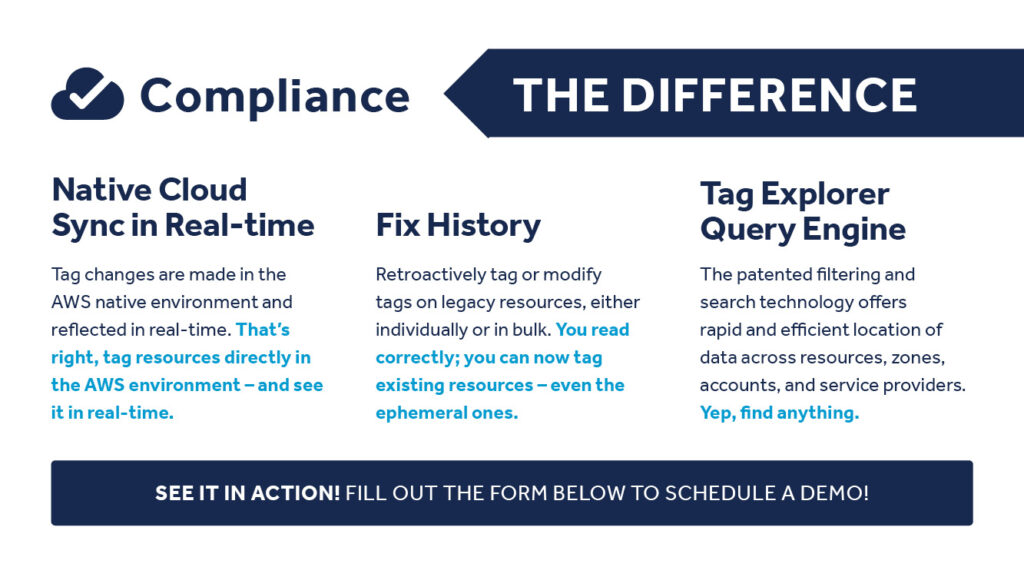Cloud governance consists of the rules, practices, or policies that dictate how resources and services are managed in the cloud as well as defining the roles of those who use them. The purpose of cloud governance is to empower you to realize the benefits of the cloud while at the same time effectively managing cloud operations, including performance, automation, cost management, security, and compliance. Tags are essential for the enforcement and monitoring of cloud governance and should support its objectives.
Governance Strategy
Excellent tag hygiene undergirds your cloud governance framework. As part of a cloud governance strategy, critical points in your tag practice are identified and the parameters for what occurs at those points are established. For example, a critical point in your tag practice is the moment a new resource is provisioned and launched. Multiple policy imperatives with respect to tags come into play at this juncture, which mandate that:
- Tags be attached immediately to avoid gaps in visibility and security.
- Consistent tags be attached with no misspellings, case deviations, or other variations to ensure accurate visibility, efficiency, and reporting.
- Security based IAM tags be attached to provide protection from security breaches.
- Essential or standard tags be attached to ensure all stakeholders have access to the resources that are relevant to their departments.
These and other imperatives lead to the creation of governance policies which dictate that every time a new resource is deployed, it, and its subcomponents, are tagged with predetermined tags supporting the organization’s priorities. Resource tagging should align with your cloud governance framework.
Governance Simplicity
The governance framework is a guide for what to do and when to do it. It should be succinct and specific enough so that everyone can understand it and any gaps in compliance are easy to detect and remediate. All key stakeholders should contribute to the identification of the tags that are needed to meet their diverse expectations. Not only should their feedback shape the tagging policies, but their adherence to a consistently implemented global tag policy must be obtained to avoid sloppy tagging from less than enthusiastic support. A comprehensive tag strategy initiates controls and optimizes resource utilization to ensure the desired outcomes and to facilitate remediation.
Governance Dynamics
Governance does not come in a one size fits all package. It needs to be customized to the organization’s unique needs and reviewed regularly to ensure it is still relevant. When new software and technologies enter the business’s blood stream or when new security and compliance regulations are promulgated the governance framework should be further reviewed. New tags may be created to facilitate implementation and new governance policies may be created to guide their utilization.
Multi-Cloud Governance
Tags are critically important in a multi-cloud environment when it comes to governance issues. Each cloud service provider has distinct requirements for tagging and consequently your tags must be refined to work in each of your cloud platforms. Only by attaching tags that are multi-cloud friendly will your governance policies run smoothly in the multi-cloud environment.
Cloud Governance Benefits
By developing a strong cloud governance framework supported by effective resource tagging, an organization will enjoy many benefits. These include improved security where data breaches are less likely to occur and access to unauthorized information is denied. Also realized is better visibility where everyone can see their data, better cost management with rightsized resources and elimination of idle resources, and better performance with streamlined operations. Cloud governance sets the standard for how the business operates in the cloud. Because tags are important for different reasons to different personas, comprehensive tagging harmonizes the potentially competing interests of various stakeholders. Careful consideration is given to each without losing sight of the big picture, ensuring that tagging and resource utilization align with business priorities.
Better Governance With Tag Manager
A rich governance practice can be realized by a robust tag practice. Tag Manager is an innovative SaaS solution offered by CloudSaver that significantly enhances your governance capabilities, especially by facilitating the creation of a solid and healthy tag environment, an absolute necessity for supporting governance initiatives. From the moment you connect, the Tag Intelligence dashboard gives you key metric visibility into your tag environment, along with an assessment of your tag health that provides guidance for correcting deficiencies. Untagged resources can be identified – even legacy resources existing before migration to the cloud – and tagged for complete resource tagging. Existing tags can be edited, creating a level of flexibility not found in other software tools. Multi-cloud configurations are not a roadblock as Tag Manager has multi-cloud features. In short, a strong governance practice is achieved and maintained by utilizing Tag Manager to create an excellent governance friendly tag environment that supports your cloud objectives.
Learn more about governance and tagging in these resources:

